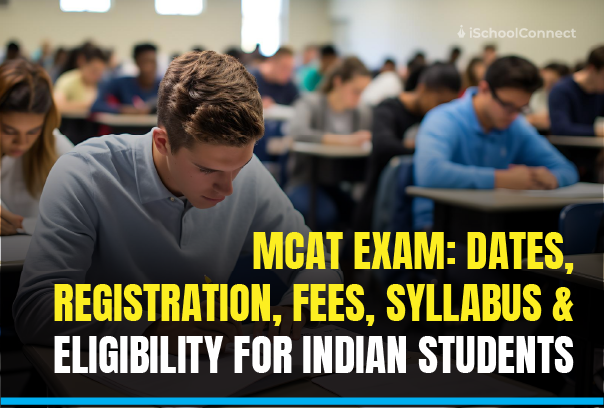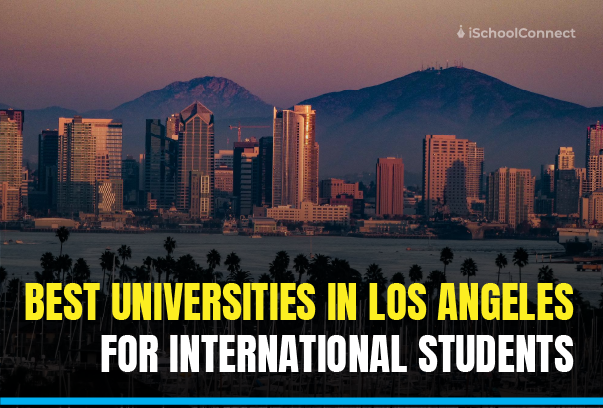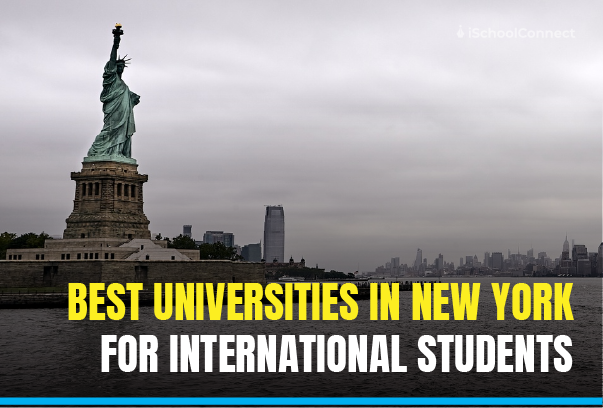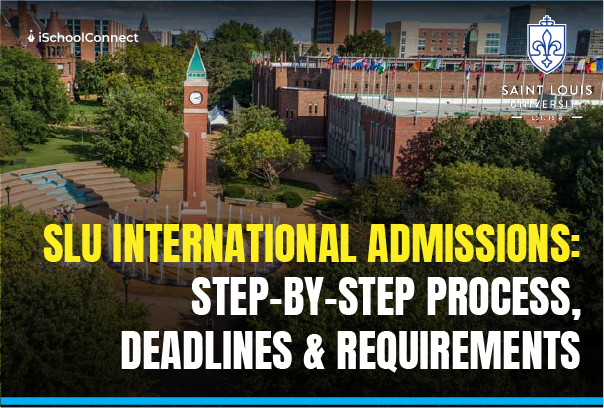Table of Contents
Studying in Australia offers you the chance to experience its stunning landscapes, diverse cultures, and exciting extracurricular activities. Beyond the classroom, you’ll find a wealth of career opportunities in Australia’s growing job market. The hands-on learning approach prepares students with valuable skills that employers worldwide are looking for. Starting in 2025, Australia will cap international student enrollments at 270,000 to maintain a balance in resources and ensure top-quality education. If you’re planning to stay and work in Australia after your studies, its immigration policies make it a great place to build your future.
Some of the major reasons that international students choose Australia as their study destination are:
- Advanced teaching styles
- Plethora of Specialist Institutions
- Quality of Scientific Research
- Global Acceptance of Australian Higher Education Standards
- Multicultural Community
- A Safe Environment
- Unique Travel Choices
- Flexibility to work up to 20 hours per week and 40 hours during semester breaks.
Permanent Resident Courses In Australia
Australian universities boast some of the highest global rankings, with seven impressive institutions currently placed among the world’s top 100.
To help you achieve this dream, we’ve compiled a list of the best permanent residency courses in Australia for 2025.
| PR Courses in Australia | Avg. Tuition Fees | Job Roles |
| Professional Engineering | 16L – 33L |
|
| Nursing | 20L – 25L |
|
| Information Technology | 8L – 27L |
|
| Accounting | 19L – 27L |
|
| Social Work | 25L – 35L |
|
| Science (Medical Science) | 25L – 38L |
|
| Master of Business Administration (MBA) | 26L – 30L |
|
| Construction Management | 17L – 26L |
|
| Education (Early Childhood) | 16L – 24L |
|
| Automotive | 5L – 11L |
|
| Trade Qualifications | 4L – 8L |
|
| Hospitality | 18L – 40L |
|
If you’re aiming for PR in Australia, these PR list courses in Australia 2024 for international students are great options aligned with the country’s skilled occupation lists.
Learn More: Top 7 universities in Australia
Discover: Australian Technology Network
Top 7 PR List Courses in Australia 2025
The majority of students who are interested in studying abroad choose programs that will prepare them for jobs and permanent residency. So, to help you figure out the best course, we have prepared a list of the top 7 best permanent residency courses in Australia.
1 Professional Engineering: Engineering institutes delivering finest education and offering the best resources in Australia. From Melbourne to Perth, Adelaide, Sydney, Brisbane, Darwin, and Hobart, you can find the best universities and institutes spread across all of Australia. The scope for Engineers is bright and wide in the land down under.
Top Universities:
- University of Melbourne
- University of Sydney
- University of New South Wales (UNSW)
- University of Queensland (UQ)
- Monash University
- University of Western Australia (UWA)
- University of Adelaide
- University of Technology Sydney (UTS)
Course Availability:
- Diploma of Engineering
- Graduate Certificate in Engineering
- Associate Degree in Engineering
- Bachelor of Engineering (with specializations)
- Graduate Diploma in Engineering
- Master of Engineering (with specializations)
- Doctor of Philosophy – Engineering (PhD)
- Advanced Diploma of Engineering Technology
- Certificate III in Engineering
- Certificate IV in Engineering
| TOP POSITION | AVG. SALARIES |
| Civil Engineer | 36L – 66L |
| Mechanical Engineer | 36L – 69L |
| Chemical Engineer | 38L – 75L |
| Software Engineer | 41L – 77L |
| Electrical Engineer | 38L – 69L |
| Structural Engineer | 41L – 77L |
| Environmental Engineer | 37L – 69L |
| Aerospace Engineer | 44L – 83L |
2. Nursing: In Australia, Nursing is a respected and rewarding profession that offers competitive salaries across various experience levels and specializations. Whether you’re a newly graduated nurse or an experienced healthcare professional, understanding the salary range in Australia is crucial for career planning and financial expectations.
Top Universities:
- University of Technology Sydney
- Deakin University
- University of Queensland
- Griffith University
Courses Availability:
- Diploma of Nursing / Certificate IV
- Bachelor of Nursing
- Master of Nursing
- Master of Nursing Science
- Master of Nursing Practice
| TOP POSITION | AVG. SALARIES |
| Registered Nurse | 37L |
| Registered Nurse (emergency room) | 39L |
| Registered Nurse (Critical care) | 44L |
| Registered Nurse (operating room) | 37L |
| Clinical Manager | 53L |
| Nurse Anesthetist (CRNA) | 55L |
| Clinical Nurse Manager | 56L |
3. Information Technology: According to the Australian Trade and Investment Commission, Australia’s $167 billion tech sector has grown by a huge 80 percent in the past five years. According to Gartner, IT spending in Australia should be over $133 billion in 2024, up 7.8 percent from last year. The additional good news for workers is that we’re struggling to find a skilled workforce to keep up with such growth. As a result, there are many roles paying over $200k for highly skilled workers. Salary shouldn’t be the sole driver for career decisions, but it’s certainly an incentive when it comes to choosing your path.
Top Universities:
- University of Melbourne
- University of Sydney
- Australian National University
- University of New South Wales (UNSW)
- University of Queensland (UQ)
- Monash University
- RMIT University
- University of Adelaide
- University of Technology Sydney (UTS)
Course Availability:
- Diploma of Information Technology
- Associate Degree in Information Technology
- Advanced Diploma of Information Technology
- Graduate Diploma in Information Technology
- Graduate Certificate in Information Technology (6 month course)
- Bachelor of Information Technology (3 year course)
- Master of Information Technology (2 years)
- Certificate III in Information Technology
- Certificate IV in Information Technology
| TOP POSITION | AVG. SALARIES |
| Software Developer | 33L – 55L |
| Data Analyst | 33L – 55L |
| Network Engineer | 38L – 61L |
| Web Developer | 30L – 49L |
| IT Project Manager | 44L – 72L |
| Cyber-security Analyst | 38L – 61L |
| Systems Administrator | 36L – 55L |
| Database Administrator | 38L – 61L |
| UX/UI Designer | 33L – 55L |
4. Accounting: Percentage of accountants employed in different firms across Australia will climb to 13.3% by the start of 2020, say analysts. The percentage is due to large, medium and small scale firms preferring hundreds of accountants to manage businesses. Another reason is regarding thriving economy that recorded an unprecedented boom with several firms enhancing the prospects of accounting aspirants.
Top Universities:
- University of New South Wales (UNSW)
- University of Melbourne
- University of Sydney
- Monash University
- Australian National University
- University of Queensland
- Macquarie University
Course Availability:
- Bachelors of Accounting
- Masters of Accounting
- Certified Practicing Accountant (CPA) Program
- Chartered Accountants Program (CA)
| TOP POSITION | AVG. SALARIES |
| Bachelors of Accounting | 27L – 38L |
| Masters of Accounting | 33L – 50L |
| Certified Practicing Accountant (CPA) Program | 38L – 66L |
| Chartered Accountants Program (CA) | 38L – 66L |
5. Social Work: Social Workers play an important role in advocating for social justice, human rights, social change and development. Social Workers may provide case management, counseling and advocacy to address issues at the personal and social level in a variety of settings including crisis support, child protection, aged care, disability, homelessness, drug and alcohol, healthcare, education or policy.
Top Universities:
- University of South Australia
- Griffith University
- University of Tasmania
- Curtin University
Course Availability:
- Graduate Certificate in Counseling Theory and Practice
- Graduate Diploma in Counseling Theory and Practice
- Master of Social Work
- PhD in Social Work
| TOP POSITIONS | AVG. SALARIES |
| Case Manager | 41L – 47L |
| Corrections and Justice Officer | 35L – 44L |
| Mental Health Support | 33L – 41L |
| Community Worker | 35L – 38L |
| Family Service Worker | 50L – 55L |
| Social Worker | 44L – 52L |
6. Science (Medical Science): Medical science encompasses a broad range of topics related to human health and the workings of the human body. Medical science students typically begin by studying the basics, for example, biology and chemistry, and then move into areas of specialization, such as pathology, microbiology, and biochemistry. Learning about the different jobs you can get with a medical science degree can help inspire your career path in this field.
Top Universities:
- University of Melbourne
- University of Sydney
- Monash University
- University of Queensland
- University of Wollongong
- University of Adelaide
Courses Availability:
- Bachelor of Nursing
- Clinical Training, Surgical Science
- Bachelor in Bioethics
- Bachelor in Brain and Mind Sciences
| TOP POSITIONS | AVG. SALARIES |
| Radiologist | 78L |
| Audiologist | 51L |
| Physiotherapist | 45L |
| Assistant Physician | 78L |
| Cardiologist | 1CR |
| Hospital Administrator | 1.28 CR |
| Medical Officer | 65L |
| General Practitioner | 1.32 CR |
| Veterinary | 54L |
| Nuclear Scientist | 48L |
7. MBA (Masters of Business Administration): Australia is one of the top five countries in the world that offer globally recognized MBA degrees. A fresher with an MBA in Australia can make AUD 60,000 to AUD 80,000, a competitive salary per global standards. Overall, pursuing an MBA in Australia offers you great ROI because of the high starting salary and career growth.
Top Universities:
- University of Melbourne
- University of Sydney
- Australian National University
- University of New South Wales (UNSW)
- University of Queensland (UQ)
- Monash University
- RMIT University
- University of Adelaide
- University of Technology Sydney
Courses Availability:
- Full-Time MBA
- Part-Time MBA
- Executive MBA
- Online MBA
- Specialized MBA
- Global MBA
- Dual degree MBA
- Flexible MBA
Learn More : Top MBA Universities
| TOP POSITIONS | AVG. SALARIES |
| Financial Analyst/ Investment Manager | 12L – 25L |
| Brand Management/ Digital Marketing | 10L- 20L |
| IT Manager / Data Analyst | 12L – 28L |
| HR Manager / Talent Acquisition Specialist | 9L – 20L |
| Entrepreneurship | Depends on venture’s success |
| Supply Chain Manager | 12L – 25L |
| Hospital Administrator | 12L – 22L |
| International Marketing Manager |
|
Explore: BA Subjects, Courses and Eligibility
Eligibility for PR Courses in Australia
Australian permanent resident status is given to a candidate with a permanent residence visa. However candidates having completed the best permanent residency courses in Australia do not hold Australian citizenship. Permanent Residents in Australia can live, work, and study for 5 years permanently in the country. After living in Australia on PR status for 4 years, the candidate can apply for citizenship based on eligibility.
- 45 years of age
- 65 points in the Australian points grid
- Valid skills assessment
- IELTS or PTE score
- Health insurance
- Police verification certificate
- GTE
- Completion of secondary education or equivalent
| Category | Maximum Points |
| Age (25-32 years) – Age should be below 45 years to apply for PR Visa | 30 points |
| English proficiency (8 bands) – A score of 8 bands in IELTS exam. However, the Australian immigration authorities allow applicants to take any of the English proficiency tests such as IELTS, PTE, etc. | 20 points |
| Work Experience outside Australia (8-10 years) – Fewer experience will give you fewer points. | 15 points |
| Work Experience in Australia (8-10 years) – Work experience in Australia can give you more points. | 20 points |
| Education (outside Australia)– Doctorate degree –Points for the education criteria depend on the educational qualification. Maximum points are given to a doctorate degree from an Australian university or a doctorate from a university outside Australia, provided the Australian government recognizes it. However, points of different qualifications are :
| 20 points |
| Niche skills such as Doctorate or Master’s degree by research in Australia | 10 points |
| Study in a regional area | 5 points |
| Accredited in community language | 5 points |
| Professional year in a skilled program in Australia | 5 points |
| State sponsorship (190 visa) | 5 points |
Skilled spouse or de facto partner (Age, Skills & English language requirements to be met) – Your spouse must meet the following requirements:
| 10 points |
| Spouse or de facto partner with ‘competent English’ (No need to meet Skills requirement or age factor) | 5 points |
| Applicants without a spouse or de facto partner or where a spouse is an Australian citizen or PR holder | 10 points |
| Relative or regional sponsorship (491 visa) | 15 points |
IELTS Band Score for Australia PR
A strong IELTS band score is crucial for obtaining permanent residency (PR) in Australia. The Australian Department of Home Affairs evaluates your English proficiency based on your performance in four key areas: listening, reading, writing, and speaking.
An overall band score of 8.0 is particularly advantageous as it earns the highest possible points for your application. Here’s a detailed breakdown of how IELTS scores contribute to your PR points:
| IELTS Band Score | Language Proficiency Level | Points Awarded |
| Band 6.0 (all sections) | Competent | 0 points |
| Band 7.0 (all sections) | Proficient | 10 points |
| Band 8.0 (all sections) | Superior | 20 points |
Achieving a higher band score not only demonstrates your English proficiency but also strengthens your PR application.
Read More: IELTS Band Required For Australia: A Guide For 2025
How to Get PR in Australia as a Student
International students in Australia can apply for Permanent Residency (PR) even without employer sponsorship. Achieving PR requires a minimum score of 65 points under Australia’s points-based system. Here’s a streamlined guide to help you understand the process:
PR Pathways
There are three main options to apply for PR in Australia:
- Family Stream Permanent Residence Visas
- Work Stream Permanent Residence Visas
- Business Investment Permanent Residence Visas
The journey typically begins with a Temporary Graduate Visa (subclass 485), allowing students to live and work in Australia for 18 months to 4 years after completing their studies. To transition to PR, students can apply for a Skilled Independent Visa while still studying.
The evaluation process for student PR applications follows the same points-based system as general PR applications, with a minimum score of 65 points. Applications are submitted through the official Australian Home Affairs website.
Learn More: Australia’s New Immigration Rules 2024| Temporary Graduate Visa & Impact on Students
Application Process for PR in Australia
The process of applying for the best permanent residency courses in Australia is easy, but applying for permanent residency can be complex. But, it generally involves the following steps:
- Complete a PR course: Complete a course aligned with an occupation on the SOL.
- Skill assessment: Acquire skills assessment from the relevant assessing authority.
- Expression of Interest (EOI): Through the Department of Home Affairs Skill Select system, submit an EOI.
- Invitation to apply: If selected, you will receive an invitation to apply for a PR visa.
- Visa application: Submit your PR visa application along with the required documents.
- Medical and character checks: Undergo medical examinations and provide character certificates.
- Visa grant: If your application is successful, you will be granted PR status.
Documents Required
- Passport and Birth Certificate
- Certificates and transcripts of your completed PR
- Positive skills assessment report
- IELTS or other recognized test scores
- Proof of relevant work experience, if applicable.
- Medical examination results and police clearance certificates
Explore: Australia’s Student Visa Rules
Summary
Australia is one of the best countries to live in, with an excellent quality of life index. Thousands of students move to the country to pursue higher education and choose to stay back. But getting the spot for best Permanent Residency courses in Australia is quite a task, and rightly so. This opportunity not only allows you to pursue world-class education in the country but also gives you access to all the resources. It’s not a shock that universities are often picky in such a case. This blog will help you on your journey to PR in Australia. It helps you choose the best permanent residency course in Australia, top universities, and job roles to expect with average salaries. Good luck!
FAQs
Ques 1. What is the highest paying job in Australia?
Answer 1. Highest paying jobs are after doing Medical Science. Check the job roles and their average payscale above.
Ques 2. What are the top PR Courses in Australia?
Answer 2. The top PR courses in Australia are Engineering, Nursing, IT, Social Work, Science and MBA.
Ques 3. What is the IELTS band score required for PR eligibility in Australia?
Answer 3. A minimum score of 8 bands in the IELTS exam. However, the Australian immigration authorities allow applicants to take any of the English proficiency tests such as IELTS, PTE, etc.
Ques 4: Which PR courses in Australia after 12th offer the best career opportunities?
Answer 4: Some of the best PR courses in Australia after 12th offering strong career prospects include:
- Bachelor of Engineering
- Bachelor of Information Technology
- Bachelor of Nursing
- Bachelor of Business
- Bachelor of Social Work
Ques 5: Which Master’s courses are eligible for PR in Australia?
Answer 5: Master’s courses like Civil Engineering, Electrical Engineering, Software Engineering, Accounting, Nursing, IT, and MBA are eligible for PR in Australia, as they are in demand on the skilled occupation list.
Ques 6: Which courses are eligible for PR in Australia 2024?
Answer 6: The following courses are eligible for PR in Australia 2024:
- Civil Engineering
- Software Engineering
- Nursing
- Accounting
- Information Technology (IT)
- Medicine (MD)
- Electrical Engineering
- Chemical Engineering
- Agricultural Engineering
- Nursing Science
- Master of Teaching
These courses are in high demand and are listed on Australia’s Skilled Occupation List, offering a clear pathway to Permanent Residency.






